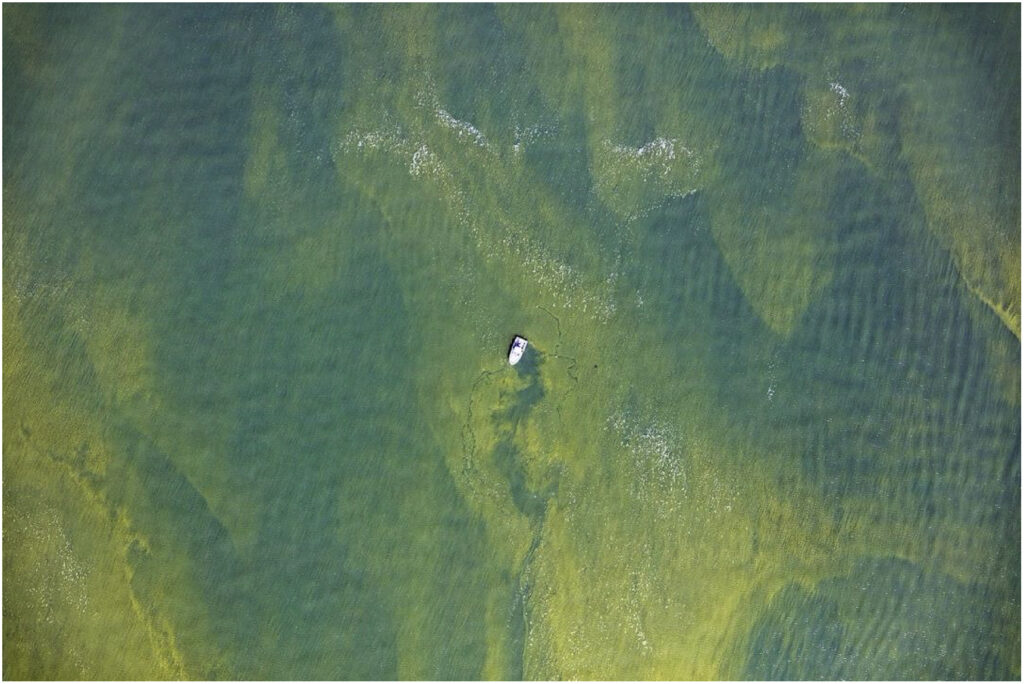Global S&T Development Trend Analysis Platform of Resources and Environment
| Moderate Harmful Algal Bloom Predicted for Western Lake Erie in Summer 2020 | |
| admin | |
| 2020-07-09 | |
| 发布年 | 2020 |
| 语种 | 英语 |
| 国家 | 美国 |
| 领域 | 资源环境 |
| 正文(英文) | NOAA and its research partners are forecasting that western Lake Erie will experience a moderate harmful algal bloom this summer. This year’s bloom is expected to measure 4.5 on the severity index – among the smaller blooms since 2011 – but could possibly range between 4 and 5.5, compared to 7.3 last year.  An aerial view of a boat in a western Lake Erie harmful algal bloom on August 3, 2019, showing variable spatial distribution of algal biomass, including variation caused by presence of the boat. Photo credit: Zachary Haslick, Aerial Associates Photography Inc. Lake Erie blooms consist of cyanobacteria, also called blue-green algae, capable of producing the liver toxin microcystin which poses a risk to human and wildlife health. Such blooms may result in higher costs for cities and local governments that need to treat drinking water; prevent people from enjoying fishing, swimming, boating, and visiting the shoreline; and harm the region’s vital summer tourism economy.  Bloom severity index for 2002-2019, and the forecast for 2020. The index is based on the amount of biomass over the peak 30-days. The severity index is based on a bloom’s biomass—the amount of its harmful or toxic algae—over a sustained period. The largest blooms occurred in 2011, with a severity index of 10, and 2015, at 10.5. Last year’s bloom had a severity index of 7.3, while 2018 was 3.6. Blooms over 5 on the severity index have substantive impacts, with noticeable areas of scum on the lake, and have larger areas and duration of impact. Blooms over 7 are the particularly severe blooms, with extensive scum formation and extensive coverage affecting the lake. The size of a bloom is not necessarily an indication of how toxic it is. The toxins in a large bloom may not be as concentrated as in a smaller bloom. NOAA is actively developing tools to detect and predict how toxic blooms will be. The Lake Erie forecast is part of a NOAA ecological forecasting initiative that aims to deliver accurate, relevant, timely and reliable ecological forecasts directly to coastal resource managers and the public. In addition to the early season projections from NOAA and its partners, NOAA also issues HAB forecasts during the bloom season. These forecasts provide the current extent and 5-day outlooks of where the bloom will travel and what concentrations are likely to be seen, allowing managers to determine whether to take preventative actions. This year’s forecast includes an improved model that provides more accurate predictions and visualizations of where the bloom is located within the water column.
|
| URL | 查看原文 |
| 来源平台 | National Centers for Coastal Ocean Science |
| 文献类型 | 新闻 |
| 条目标识符 | http://119.78.100.173/C666/handle/2XK7JSWQ/283099 |
| 专题 | 资源环境科学 |
| 推荐引用方式 GB/T 7714 | admin. Moderate Harmful Algal Bloom Predicted for Western Lake Erie in Summer 2020. 2020. |
| 条目包含的文件 | 条目无相关文件。 | |||||
| 个性服务 |
| 推荐该条目 |
| 保存到收藏夹 |
| 查看访问统计 |
| 导出为Endnote文件 |
| 谷歌学术 |
| 谷歌学术中相似的文章 |
| [admin]的文章 |
| 百度学术 |
| 百度学术中相似的文章 |
| [admin]的文章 |
| 必应学术 |
| 必应学术中相似的文章 |
| [admin]的文章 |
| 相关权益政策 |
| 暂无数据 |
| 收藏/分享 |
除非特别说明,本系统中所有内容都受版权保护,并保留所有权利。
修改评论